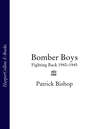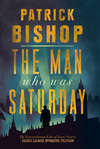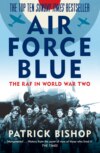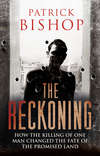Читать книгу: «Bomber Boys», страница 3
When the German army began its great surge westwards, the RAF at last moved to put its war plans into action. Bomber Command had been engaged from the beginning in trying to stem the flow of armour as it flooded into Belgium, Holland and France, bombing bridges and communications and suffering terrible punishment from mobile flak batteries and fighters in the process.
Initially raids were restricted to targets west of the Rhine. On the night of 11/12 May, an attack was launched on Mönchengladbach, the first on a German town. The thirty-seven aircraft that took part were aiming for road and rail junctions but bombs fell among houses and blocks of flats. They killed three Germans: Carl Lichtschlag, sixty-two, Erika Müllers, twenty-two, and a two-year-old girl called Ingeborg Schley. The dead also included a British citizen. Ella Ida Clegg had been born fifty-three years before to a British father who left Oldham to work as a factory foreman in the Rhineland. Nothing else is known about her. She was listed in official records simply as a ‘volunteer’.7 She will be remembered only as one of the first batch of civilians to die in the air war in Germany. These first corpses had names, but that did not last long. Such tragedies soon became commonplace as aerial war dragged ordinary people on to the battlefield and names gave way to numbers.
Four days later Bomber Command visited for the first time a target to which it would return over and over again in the years ahead. Nearly a hundred aircraft set off to attack sixteen different oil and rail targets in the Ruhr, the smoky, densely-populated agglomeration of steel and coal cities clustered along the Rhine river system, which was the heart of Germany’s war industry.
It was a puny raid by the standards of what was to come, but it was later counted by Bomber Command’s official historians as the first action of the strategic air campaign. The targets included factories in Dortmund, Sterkrade, Castrop-Rauxel and Cologne. One bomb, aimed at the IG-Werk at Dormagen, landed on a farm and killed Franz Romeike, a dairyman. Local rumour had it that he had switched on a light on his way to the lavatory and attracted the attention of a bomb-aimer. The story revealed an exaggerated notion of the accuracy of bombing, but an entirely realistic understanding of how randomly death could arrive in an air raid.
By attacking industry and communications, Bomber Command was fulfilling its raison d’être but the events of the rest of the summer meant it was deflected from concentrating on this activity. In July, having swallowed France, Germany turned its attention to Britain, launching the Luftwaffe across the Channel in an attempt to clear the skies for a possible invasion. Bomber Command was ordered to weaken the enemy’s air strength at its source by destroying aluminium plants, airframe factories and stores. It was also tasked with attacking airfields and sinking the barges appearing in the North Sea waterways to carry the invasion troops. On top of all this, it was expected to continue hitting oil, communications and industrial targets when it could.
The weight of Bomber Command’s duties meant there was no concentration of effort and the effects of their bombing, apart from on troop transports, were negligible. Nonetheless, throughout the summer the Air Ministry showered its commander-in-chief, Sir Charles Portal, with directives. Portal was a realist and a sceptic, whose perfect manners and quiet demeanour hid a mind that was as cool and hard as marble. It was he, as much as anyone, who led Bomber Command away from its pursuit of a precision that was, initially at least, unattainable, and towards a policy of annihilation. Portal queried, in his courteous but firm fashion, the wisdom of attacking the German aircraft industry. Many of the targets were sited in remote areas. He pointed out that ‘the very high percentage of bombs which inevitably miss the actual target will hit nothing else of importance and do no damage and the minimum amount of dislocation and disturbance will be caused by the operations as a whole.’ He also advocated that when initial targets could not be reached because of bad weather, aircraft should be free to dump bombs on alternatives, thus increasing ‘the moral effect of our operations by the alarm and disturbance created over the wider area’.
With these observations, which caused some surprise and concern at the ministry, Portal opened the way to a crucial shift in bombing policy. In his view, any damage was better than none and undermining morale, the moral effect in the language of the day, was a very important and desirable product of aerial bombardment. The Air Staff felt the need to sound a cautionary note. It felt that ‘moral effect, although an extremely important subsidiary result of air bombardment, cannot in itself be decisive’.8 For the time being, at least, it maintained its faith in what it believed were selective, precise attacks.
Portal was being indiscreet in advocating so frankly the spreading of panic. But he was stating a belief that had been accepted inside the air force from the earliest days. Despite undertaking that the RAF would not attack the civilian population as such, it was understood that any attack on land-based strategic targets would result in civilians dying. Trenchard’s independent force had killed 746 innocent Germans in the 242 raids it mounted in the six months of its existence.
Few moral contortions were necessary to justify certain civilian deaths. Many took the view that the factory worker manufacturing shells was as lawful a target as the artilleryman firing them. The killing of women and children naturally caused revulsion. But at the same time it was widely accepted that all bloodshed, or the threat of it, had beneficial results in lowering enemy spirits and undermining the will to sustain the war effort. This was no more than a reflection of Trenchard’s dictum that the moral effect of bombing was twenty times that of the material effect. The question was, as the Air Ministry reply made clear, whether the issue of morale could be decisive. And if it could, should morale itself be a primary target of strategic bombing?
The first reports filtering out of Germany suggested that this might be the case. Germans had been led to believe that they would be largely untroubled by air attack, and very well protected if any should occur. The thin evidence available, from neutral journalists and diplomats and a handful of spies, spoke of shock and dismay among ordinary citizens that the war had entered their towns.
Meagre though this testimony was, it reinforced the conviction in some quarters that German nerves were weaker than those of the British. This was Trenchard’s belief. It was not Churchill’s, who in October 1917, when calls for revenge for the German air raids were at their loudest, had dismissed the idea that a response in kind could produce a German surrender. ‘Nothing that we have learned of the capacity of the German population to endure suffering justifies us in assuming that they could be cowed into submission by such methods,’ he wrote.9
Even if the Germans’ pluck was suspect, it was questionable whether this would produce any immediate advantage for Britain and its allies. An influential subcommittee reporting to the Chiefs of Staff had pointed out with some understatement three years before the outbreak of war that ‘a military dictatorship is likely to be less susceptible to popular outcry than a democratic government’.10 This was only common sense, but it was to be very often forgotten or ignored.
The Battle of Britain and the Blitz provided the great test of British morale. In the first two months of the air war, 1,333 people were killed as German bombs missed their targets or were scattered at random when the raiders headed for home. On the night of 24 August the first bombs fell on central London and a fortnight later it experienced its first heavy bombardment. That month 6,954 civilians were killed all over Britain, and a further 6,334 in October. This was death on a hideously larger scale than had been endured in the previous war.
In the capital, the bombs were ostensibly aimed at docks, railways and other locations with an arguable military or war-industrial value. In practice they landed everywhere. They fell on Westminster Abbey, St Paul’s Cathedral, Kensington Palace, Lambeth Palace and Buckingham Palace, twice. They hit hospitals and theatres, the London Zoo and Madame Tussaud’s. They crashed down on rich and poor alike, the brick terraces of the East End and the stucco squares of Kensington and Mayfair. But the great sprawl of London meant that the violence lacked concentration. As one part of the city was ‘getting it bad’ another was having a relatively quiet night. The capital adjusted quickly to death from the air. The damage was spectacular but had minimal effect on the war effort. There was little sign of the collapse of morale feared by the authorities, even though the Blitz was to continue, night after night, until the following spring.
Churchill had reacted to the first London raid by ordering an attack on Berlin. It went ahead on the night of 25 August. The city was covered with thick cloud making aiming virtually impossible. The incendiary bombs that did fall within the city limits did little damage, mostly landing harmlessly in open country. There were three further raids on Berlin in the next few days. The prime minister wanted to spread the attacks throughout Germany but faced resistance from the Air Staff who continued to argue for narrow and selective targeting.
But as the German bombardment persisted, such a detached view became untenable. As a concession to the new mood, on 21 September the Air Staff directed Portal to continue the assault on Berlin. The bombers should aim for ‘legitimate’ targets such as railways and the like. But the object was also to cause ‘the greatest possible disturbance and dislocation both to the industrial activities and to the civil population generally in the area.’11
To Portal, the directive did not go nearly far enough. Ten days before he had offered a new policy to the staff, based on direct retaliation. He suggested twenty German towns should be warned by radio broadcast that each attack on a British town would be repaid by a heavy, indiscriminate attack by Bomber Command on one of their number. Alternatively, a town like Essen, the home of the arms manufacturer Krupp, which could be regarded in its entirety as a military target, could be subjected to overwhelming bombardment. Another approach was to select a military target, presumably a barracks or suchlike, for an all-out assault in ‘the knowledge that the normal spread of such a heavy attack would inevitably cause a high degree of devastation to the town.’12
Portal’s views, combined with those of the prime minister, forced the Air Staff planners to think again. They had stuck to their view in the belief that precision bombing was attainable and producing desirable results. They regarded the inevitable civilian deaths as incidental to the main aim of destroying strategic targets, not an end in themselves.
Portal’s position was strengthened by a German decision to raise the stakes in the air war. On the night of 14 November, a force of 449 aircraft was sent to Coventry in the Midlands. The air raid killed 554 people and seriously injured 865, almost all of them civilians. Its political impact, though, was to prove far greater than the physical damage inflicted. What happened in Coventry would shape the direction of the air war.
2 Coventrated
Coventry was an obvious and, by the standards that Britain had set itself, a legitimate target for aerial attack. Its mediaeval core and fine cathedral and churches did not alter the fact that it was an important centre of war industry, crammed with aircraft and motor-car factories and machine-tool and instrument works.
The people who worked in Coventry liked the place. Many had come from elsewhere to man the production lines and were pleasantly surprised to find themselves in a city of manageable size and that nowhere was far from open country. Rearmament had made it prosperous. By 1940 its population had grown to nearly 240,000, double what it had been thirty years before.
Even with the influx of outsiders, civic pride was strong. ‘People were self-disciplined and proudly self-reliant,’ wrote Dennis Field, a Coventry schoolboy at the time of the raid who went on to join Bomber Command. There was a marked communal loyalty summed up in the signature tune of the city’s favourite entertainer, Sydney James, who appeared every week at the Rialto. As he played the organ, the audience would sing along.
Looking at life and wearing a smile
Helping a lame dog over a stile
Don’t mind the rain
Forget your umbrella
Or lend it, for once, to the other fella
Making the best of all that you find
Leaving your cares and your worries behind
Laughing at your troubles and your trials and your strife
Yes, that is the best way of looking at life …1
An air of complacency seems to have hung over the pleasant streets of Coventry in the early part of the war. Its politics were Labour, a consequence of the strong trade-union movement rooted in the factories. Coventry people made weapons but many were opposed to their use. Pacifism and the disarmament movement were strong. In Coventry, as elsewhere, a strange mood of insouciance, verging on fatalism, was noticeable as the violence grew nearer. When, in the spring of 1939, the authorities offered Anderson bomb shelters at a price of five pounds (free for the lower-paid) there were few takers. Those who accepted had their legs pulled for being ‘windy’.
In June 1940, when the first bombs dropped on Ansty aerodrome just outside the city, they were seen as a novelty. People set out in cars and on bicycles to gawp at the craters. The thrill soon wore off. Between 18 August and the end of October Coventry was attacked seventeen times, killing 176. As the casualty list lengthened, people started leaving the city at night, ‘trekking’ to the safety of the surrounding countryside. The better off went by car, the less affluent by bus. The very poorest piled bedding on to prams and walked out, sleeping under bridges.
By the time of the big raid people had grown accustomed to the howl of the sirens and the nuisance of shifting down to the basement or heading to the nearest public shelter. For the workers of the fire service and Air Raid Precautions, the attacks provided good practice. They had seen mutilated bodies and knew what an air raid felt like.
Despite the acknowledged threat, Coventry’s defences were weak, with only thirty-six anti-aircraft guns protecting the city. There were searchlights and fifty-six reassuring-looking barrage balloons wallowed over the city, but they were not much of a deterrent on the fatal night. RAF night-fighters found tracking intruders in the dark an almost impossible task and their success rate was to remain pitifully low until enough aircraft were fitted with radar.
A shelter-building programme had been accelerated as the raids continued and there was room inside them for most of the population but many of them were damp and cheaply built. The council’s emergency committee kept an informal log of what was being said in bus queues and pubs. The state of the shelters, the feebleness of the anti-aircraft defences and the absence of British fighters were consistent themes of complaint.2
Coventry’s transformation from an obscure Midlands city to an international symbol of civilian suffering and the inhumanity of modern war started at dusk on Thursday 14 November when crews of the Luftwaffe Pathfinder Force Kampfgruppe 100 boarded Heinkel 111s and took off from a base at Vannes, north of Saint-Nazaire. Coventry was one of three targets that night. The others were Wolverhampton and Birmingham.
The moon began to rise over Coventry at 5.18 p.m. Everyone would later recall its extraordinary brightness. It gleamed on the cobbles of the old city and the lead roof of the cathedral. The sight made people nervous. The citizens had come to fear a bomber’s moon. At 7.10 p.m. the sirens sounded. This was early for a raid to be announced and the apprehension deepened. Ten minutes later the Germans were overhead and the bombardment began. It started with small incendiaries. They made a curious swishing noise as they fell. By now people had learned how to deal with them, picking them up with a long-handled shovel and dropping them into a bucket of water or sand.
But they came down in huge numbers and the emergency services and volunteer firewatchers were soon overwhelmed. At 9.31 p.m. the first high explosive (HE) bombs hit the ground. A firewatcher’s log recorded at 9.40 p.m.: ‘Cathedral blazing fiercely. HEs all around the city centre.’ The sirens had sent women and children hurrying out into the blacked-out streets to seek the public shelters, or down into their basements or back-garden Andersons. ‘When the sirens sounded I was doing homework in our front room,’ Dennis Field remembered. ‘The continual drone of engines and falling bombs made it quickly obvious that the raid was unusually heavy and Mum and I soon decided to go to next-door’s shelter where we had an open invitation when things looked sticky. It was cold and we took extra coats … the bombs rained down … many times we crouched down expecting the worst … occasionally there were colossal bangs and blasts which blew open the door. I wanted to go out and see what was happening and to help if I could but demurred to Mum’s pleadings and restricted myself to occasional peers outside. The sky seemed aglow with the brightest huge conflagration lighting the sky in the direction of the city centre.’
After the initial fire-raising attack lit up the city the main force of bombers converged on it in three streams, crossing the English coast at Lincolnshire, Portland and Dungeness. The raid had been planned in considerable detail. Each of the eight bomber units involved had been assigned an objective. Their targets included the Alvis aero-engine factory, the Standard Motor Company, the British Piston Ring Company, the Daimler works and the Hill Street Gasworks. The greatest destruction was done to the Daimler factory to the north of the city centre, which produced among other things rotating gun turrets. The site was struck by up to 150 HE bombs and 3,000 incendiaries. The Alvis factory was bombed flat. Altogether twenty-seven war production factories including twelve engaged in making aeroplanes were hit.
The raid reached a climax around midnight. A survivor remembered ‘a night of unforgettable horror – the scream of falling bombs – the shattering explosions – the showers of incendiaries, literally thousands, and then … perhaps the most horrifying sight of all – the sudden fires leaping up, their flames, fanned by the wind, rapidly spreading and enveloping all within reach.’3 The smell of the burning city reached up to the bombers. A crewman, Hans Fruehauf, who had taken part in the first London raids, looked down on the lake of fire and wondered what he was doing. ‘The usual cheers that greeted a direct hit stuck in our throats. The crew just gazed down at the flames in silence. Was this really a military target, we all asked ourselves?’4 A ‘Front Reporter’ for the German propaganda service was a passenger in one of the aircraft. He had no doubts of the legitimacy of what he witnessed. ‘We could see enormous fires raging, some white and brilliant, others dark red. Then came the high spot of the raid, the dropping of the bombs … a tremor went through the machine as the bombs dropped … our bombs had hit their mark; the fires extended … it is the nerve centre of the British armament industry which had been hit, and I am proud that I witnessed this.’5
The anti-aircraft guns soon ran out of ammunition and there was no sign of RAF night-fighters so the Germans were free to bomb as they pleased, swooping in low to improve accuracy. As mains were shattered and hydrants buried under rubble, the firemen’s hoses ran dry. Crews drafted in from outside watched impotently as Coventry burned. The fire was fiercest in the old city centre. John Sheldon who owned a stables in Little Park Street described the din of ‘falling walls, girders, pillars, machinery crashing four storeys, the droning of the planes as they let go their bombs and the rattling of shrapnel on corrugated sheeting’. It seemed to him that no one caught in the open could possibly have survived.6
The fire created weird effects. In Broadgate, in the heart of the city, the smell of roasting meat from burning butcher shops mingled with the scent of fine Havanas from the tobacconists, Salmon and Gluckstein. Inside the shelters, the air was thick with plaster and brick dust shaken loose by the pounding, and the stench of filth from the primitive or non-existent latrines. The overwhelming feeling was of powerlessness. It was better to be outside doing something. The ARP and Auxiliary Fire Service workers, the ambulancemen, doctors and nurses found they were too busy to be afraid. The urge to not let oneself down, to be seen to be coping and doing one’s best was a strong antidote to fear or at least a help in suppressing it. ‘Everyone was working as a member of a team,’ said a student nurse at Gulson Road Hospital which was inundated with casualties after the Coventry and Warwickshire Hospital suffered heavy damage. ‘Even the consultants who were normally treated like little gods and who to us poor nurses never seemed to be in the best of moods became human.’ During her training she had dreaded having to assist at an amputation and had arranged to be off duty when such operations were scheduled. ‘The blitz on Coventry changed all that for me. I didn’t have time to be squeamish.’7
Despite the ferocity of the attack, rescue workers struggled on. Instead of reducing the value of life, the scale of the slaughter seemed to increase it. Every death averted, every existence saved, was a small victory. The hope of preserving a life drove the rescue teams to extraordinary lengths of selflessness. Les Coleman, an air-raid warden, heard a baby crying from beneath the rubble of a demolished house. He and his mates scrabbled for hours at the pile of bricks, fearful of using picks and shovels in case they hurt the child. Overhead the Luftwaffe were busy and the bombs fell steadily. They only stopped digging when the crying faded to silence.8
The all-clear sounded at 6.16 p.m., eleven hours after the first warning. Few heard it. Most of the electricity cables that powered the sirens were cut. Gradually people crept from the shelters into a drizzly morning and a changed world. The first thing they did was to look for their houses. Dennis Field found his, ‘like most around, with windows out and roof damaged and clearly uninhabitable.’ At least it was still standing. Whole streets had disappeared and landmarks vanished. The town seemed to have dissolved. The survivors walked through mounds of smoking debris flickering with flame, around craters big enough to swallow a bus. The most shocking sight was the cathedral. It lay open to the sky. The roof and the pillars had collapsed and everything inside the nave had burned to ash, piled up within the sagging external walls. All that remained was the spire and tower.
Coventry had been hit by 503 tons of high explosive, 56 tons of incendiaries and 127 parachute mines. The city was like others which had expanded during the Industrial Revolution. The workers’ houses were huddled along the flanks of the factories they worked in. It was inevitable that the German bombs, no matter how well aimed, would hit them. Altogether 42,904 homes were destroyed or damaged, 56 per cent of the housing in the city. The number of dead was put at 554. Another 863 were seriously injured.
This was the most concentrated attack of the Blitz to date. To Britain and its allies it seemed that the Germans had set a new standard in ruthlessness. Those who took part in the raid believed they were engaged in a respectable act of war. At the pre-operation briefing, crews were told by their commander that Coventry was ‘one of the chief armament centres of the enemy air force and has also factories which are important for the production of motor vehicles and armoured cars.’ If the raid succeeded, he said, ‘we shall have dealt another heavy blow to Herr Churchill’s war production.’9
The raid was indeed a great success. Eight hours after it ended, German radio listeners were told that bombers had ‘inflicted an extraordinarily heavy blow on the enemy’ and that Coventry had been ‘completely wiped out’. In the broadcast a notorious word was heard for the first time. What the bombers had done was to koventrieren, to Coventrate, the city.10
Until now civilian spirits had held up well in air attacks. Coventry provided a new and sterner test of morale. The raids on London so far had been heavy but scattered. The attacks on places like Liverpool and Southampton had been limited and of much shorter duration. The violence against Coventry seemed more focused and therefore potentially more traumatic than anyone else had experienced. It was here that the question of whether Britain could take it might be answered.
The first evidence was troubling. As people struggled to recover, a feeling of numb hopelessness appears to have set in. By now there were reporters around to record the city’s mood. Hilde Marchant, a thoughtful and courageous Daily Express correspondent who had witnessed the war in Spain, arrived while fires still burned and buildings toppled. She came across a dazed-looking group standing helplessly in the street, ‘occasionally asking when bread was coming into the city. There was no clamour, just sullen resentment at the inconvenience. They had patience because they were too weary to be angry.’ Outside the Council House, the municipal headquarters, she saw a long queue. ‘Men without collars and still in their carpet slippers. Women in woollen dressing gowns and slippers just as they had come from the shelter … asking for food and money.’
When an aeroplane appeared overhead there was a wild scramble and women hauled their children to the nearest shelter. The aircraft shifted in the sky to reveal RAF roundels, but it was some time before anyone was persuaded to come out. Some people had never left the shelters after the all-clear. Peering into one, Marchant saw two adults and two children ‘with greenish faces, so still that they looked dead’. A team from the pioneering social study group Mass Observation, veterans of bomb attacks on London and elsewhere, arrived in Coventry on Friday afternoon less than a dozen hours after the raid finished. Their report claimed the attack had caused ‘unprecedented dislocation and depression’, compared with what they had seen before. ‘There were more open signs of hysteria, terror, neurosis observed than during the whole of the previous two months together in all areas,’ it said. ‘Women were seen to cry, to scream, to tremble all over, to faint in the street, to attack a fireman and so on. The overwhelmingly dominant feeling on Friday was the feeling of utter helplessness. The tremendous impact of the previous night had left people practically speechless in many cases. And it made them feel impotent. There was no role for the civilian. Ordinary people had no idea what they should do (original emphasis).’11
The lack of organization or direction was unsurprising given the power of the attack. The mayor and his officials, the men who ran the city’s services, had all suffered the same experience as everyone else. An individual report by a Mass Observation representative suggested that Coventry’s relative smallness meant the ‘shock effect of the bombing was much greater than in London … everybody knew somebody who was killed or missing … everybody knew plenty of people who had been rendered temporarily or permanently homeless. And these subjects occupied literally 90 per cent of all conversation heard throughout Friday afternoon and evening. Even in Stepney at the beginning of the Blitz there was not nearly so much obsession with damage and disaster.’
This was to be expected and no indication of despair. But the observer also noted that people seemed anxious to leave Coventry behind, reporting that ‘the dislocation is so total in the town that people easily feel that the town itself is killed (original emphasis).’12
This was the reaction that the authorities had feared, opening the way to anarchy. It was particularly disastrous if it happened in Coventry. If the city descended into chaos and flight, who would man the war factories when they were rebuilt, as they would have to be if the struggle was to continue?
Senior government figures rushed in to test the mood themselves. The Home Secretary Herbert Morrison, the Minister of Health Ernest Brown and the Minister of Aircraft Production Lord Beaverbrook converged on Coventry. The city officials who met them were angry. They demanded to know why there had been no night-fighters to protect them and so few guns. Morrison wrote later that he found ‘an almost total lack of will or desire to get the town moving again’ and detected an ‘air of defeatism’. This was desperately unfair. The men in front of him were still in shock from an experience that was unknown to the men from London. The chief fire officer, who showed up covered in grime from the smoke, fell asleep at the table.
Lord Beaverbrook, the Canadian-born press baron and crony of the prime minister, seemed particularly unsympathetic. Instead of offering any apology for the absence of fighters he made a florid speech, reminding the officials of their duty to get Coventry working again. This was the brutal truth. Coventry was essential to the war effort and the resumption of production was given precedence over easing the plight of survivors. The first major decision was to set up an organization under the chairmanship of a powerful local car manufacturer, William Rootes, to oversee the restoration of gas, water, electricity and transport so that the war factories could function again.
Бесплатный фрагмент закончился.




















